40 how to read nutrition information labels
› food › food-labeling-nutritionIndustry Resources on the Changes to the Nutrition Facts Label Nutrition labels on the outer label of packages of products that contain two or more separately packaged foods that are intended to be eaten individually (e.g., variety packs of cereals or snack ... When it comes to reading food labels, what's most important? Serving size. Check to see how many servings the package contains. The nutrition numbers on the rest of the label are for a single serving. So if you eat two ...
Learn How the Nutrition Facts Label Can Help You Improve Your Health Read the Nutrition Facts labels on your packaged food and drinks to keep track of sugars, fats, protein, and other nutrients. Most sodium we consume is from salt, and salt is commonly in processed foods. Read labels and choose the product with less sodium. Drink plain water instead of sugary beverages.

How to read nutrition information labels
How to understand food labels | Eat For Health The Nutrition Information Panel on a food label offers the simplest and easiest way to choose foods with less saturated fat, salt (sodium), added sugars and kilojoules, and more fibre. It can also be used to decide how large one serve of a food group choice or discretionary food would be and whether it's worth the kilojoules. › nutrition › avocado-nutrition7 Benefits of Eating Avocados, According to a Dietitian Jun 29, 2022 · Avocados are high in a number of important nutrients, many of which are lacking in modern diets. Here is the nutrition breakdown for a 7-ounce (201-gram) avocado ():Calories: 322 Fat: 30 grams ... Food labels - NHS Nutrition information labels can help you choose between products and keep a check on the amount of foods you're eating that are high in fat, salt and added ...
How to read nutrition information labels. How to read nutrition facts on food labels? Food Labels to Read. Step 1: Determine the number of servings and the number of calories per serving. The serving size determines all of the information on a food label. Step 2: Determine the amount of fat in the dish. Step 3: Determine the amount of cholesterol in your system. Step 4: Make sure the sodium level is correct (salt). How To Read Nutrition Labels - Mayo Clinic Diet All the nutrition info — including calories — refer to the amount in one serving. 2. Check the calories in one serving 40 calories is low, 100 calories is moderate, 400 calories or more is high. Remember: If you eat multiple servings, you'll need to multiply the calories by the number of serving that you eat. 3. Check the % Daily Value Reading Food Labels | ADA - American Diabetes Association The Nutrition Facts labels on foods are really the key to making the best choices. We'll cover the basics so that these labels make shopping easier for you. Get started Understanding Carbs You've heard it all. From carb-free to low-carb, to whole and empty carbs, it's hard to know what it all means. Learn more Food & Blood Sugar 3 Ways to Read Nutrition Facts on Food Labels - wikiHow Life How to Read Nutrition Facts on Food Labels methods 1 Understanding Serving Sizes 2 Reading the Nutrients 3 Consuming Recommended Amounts Based on Daily Values Other Sections Expert Q&A Related Articles References Co-authored by Amy Chow and Eric McClure Last Updated: November 4, 2021 References
How to Read a Nutrition Facts Label - American Bone Health Daily Values for nutrients have been updated, which may make the percent Daily Value higher or lower on the new Nutrition Facts label. As a general guide: 5% DV or less of a nutrient per serving is considered low. 20% DV or more of a nutrient per serving is considered high. The footnote at the bottom of the label has been updated to better ... Reading food labels: Tips if you have diabetes - Mayo Clinic Sample Nutrition Facts label If your meal plan is based on carbohydrate counting, food labels become an essential tool. Look at total carbohydrates, not just sugar. Evaluate the grams of total carbohydrates — which include sugar, such as added sugars; complex carbohydrates; and fiber — rather than only the grams of sugar. Food Labeling For Fats | How To Read Food Labels - YouTube When you are grocery shopping, it is important to take the time to read food labels. This will help you make healthier choices for your family. Some fats are... › food › nutritionThe Basics of the Nutrition Facts Label Mar 04, 2022 · Those in the largest amounts are listed first. This information is particularly helpful to individuals with food sensitivities or allergies, those who need to avoid certain ingredients due to religious reasons, or people who prefer a vegetarian eating style. Learn more about the Nutrition Facts Label by visiting the FDA website.
How to Read a Nutrition Label: Tips from a Registered Dietitian "When you look at the calories on a food label, it's key to remember that the number you see only accounts for one (1) serving. To get the total number of calories, you also need to track the number of servings you eat and then multiply," McInerney explains. Quick Tips for Reading the Nutrition Facts Label - Food and Drug ... Quick Tips for Reading the Nutrition Facts Label Use Percent Daily Value (%DV) as a guide. The %DV shows how much a nutrient in a serving of the food contributes to a total daily diet. As a general... › nutrition › how-to-read-food-labelsHow to Read Food Labels Without Being Tricked - Healthline Aug 19, 2020 · Nutrition labels state how many calories and nutrients are in a standard amount of the product — often a suggested single serving. However, these serving sizes are frequently much smaller than ... How to Read Nutrition Facts | Food Labels Made Easy - YouTube One of the best ways to improve your health quickly is by learning how to read nutrition labels. The first thing you'll notice at the top of nutrition facts are the serving size and servings per...
Use the Nutrition Facts Label - National Institutes of Health Get enough of these: potassium, fiber, vitamins A and C, calcium, and iron Use the Percent Daily Value (% DV) column when possible; 5% DV or less is low, 20% DV or more is high Visit the Smart Food Shopping page and learn how the label can help you choose foods lower in calories, fat, and added sugar to help maintain a healthy weight.
dtc.ucsf.edu › learning-to-read-labelsLearning To Read Labels :: Diabetes Education Online When you read food labels, the grams of sugar are already included in the total carbohydrate amount, so you do not need to count this sugar amount separately. The grams of sugar listed include both natural sugars, from fruit or milk, and added sugars. On a nutrition food label, the total carbohydrate includes the sugar.
How to Read Nutrition Facts Labels - Action for Healthy Kids Choosing foods that have smaller percentage Daily Value for saturated fat, added sugars and sodium. A small percentage or low amount of a specific nutrient is considered 5% DV or less. Choosing foods that have higher percentage Daily Value for vitamins, minerals and fiber. A higher percentage of a specific nutrient is considered 20% DV or more.
How to Read a Nutrition Facts Label | Everyday Health Mar 29, 2022 ... When reading a nutrition facts label, look at the serving size first. “This helps put the nutrient information into context and allows ...
› how-to-read-food-labelsHow to read food labels | healthdirect For example, a product that is 'low fat' may have more kilojoules than another similar product. Check the Nutrition Information Panel to see how the product compares. How to read the Nutrition Information Panel. The Nutrition Information Panel tells you the size of a standard serving of the product and which nutrients are contained in that serving.
We See Nutrition Facts Labels, But Do We Really Read Them? Researchers at the University of Minnesota asked 203 people to look at 64 food products on a computer monitor that was outfitted with an eye-tracking device. The scientists moved the nutrition ...
Reading Food Labels | Children's Hospital of Philadelphia Clinical Nutrition. 10 Locations. Contact Us. 215-590-5223. 267-425-3310. Clinical Nutrition Home. News and Articles. Patient Instructions.
How To Read Food and Beverage Labels - National Institute on Aging Or you can call the U.S. Department of Agriculture's Food and Nutrition Information Center at 301-504-5414. Understanding percent Daily Value (% DV) The percent Daily Value (% DV) tells how much a nutrient in a serving of the food or beverage contributes to a total daily 2,000-calorie diet.
Understanding Food Labels | The Nutrition Source The label lists the calorie amount for one serving of food. The serving size, also important but often unnoticed, is easily doubled or tripled when not paying ...
How to Read Everything on the Nutrition Facts Label - Food Network Serving sizes are a useful tool for telling us how many nutrients we're consuming. When you take a look toward the top of the Nutrition Facts label you'll see the servings per container and the...
Understanding Food Nutrition Labels | American Heart Association 1 - Start with the serving information at the top. This will tell you the size of a single serving and the total number of servings per container (package). 2 - Next, check total calories per serving and container. Pay attention to the calories per serving and how many calories you're really consuming if you eat the whole package.
Food Labels | CDC - Centers for Disease Control and Prevention If you eat the whole thing, you are eating 8 times the amount of calories, carbs, fat, etc., shown on the label. Total Carbohydrate shows you types of carbs in the food, including sugar and fiber. Choose foods with more fiber, vitamins, and minerals. Choose foods with lower calories, saturated fat, sodium, and added sugars. Avoid trans fat.
How to read nutrition labels? Step 2: Determine the total number of calories consumed. Step 3: Use the Percent Daily Values as a Reference Point. Step 4: Review the Nutrition Glossary. Step 5: Choose foods that are low in saturated fat, sugar, and sodium. What are the 10 rules for reading a food label.
› food › new-nutrition-facts-labelHow to Understand and Use the Nutrition Facts Label | FDA When looking at the Nutrition Facts label, first take a look at the number of servings in the package (servings per container) and the serving size. Serving sizes are standardized to make it easier...
PDF MOVE! Nutrition Handout N10: How to Read a Nutrition Facts Label size" is the official term used on food labels. Nutrition facts given on the food label are based on one serving. Be sure to look at the number of servings in the container. Even small containers may have more than one serving. If you eat the whole container, then you must multiply the nutrition values by the number of servings in the ...
How to Read a Nutrition Facts Label (Video) - Johns Hopkins All ... Most packaged foods come with a Nutrition Facts label. These labels have a lot of important information — on fat and calories, serving sizes, sodium content, and more — but they're hard to understand. Watch this video for tips on figuring out food labels so you can make healthy choices. Note: All information is for educational purposes only ...
How To Read Nutrition Labels In this article, we will be looking at the nutrition label for Oreos. The Nutrition label for standard Oreos (the one that contains 36 Oreos) is shown in the table below. We will also be looking at the number of calories in Oreos and what it means in terms of weight loss. [button-voodoo-v2 id="1″] Nutrition … Read more
Food labels - NHS Nutrition information labels can help you choose between products and keep a check on the amount of foods you're eating that are high in fat, salt and added ...
› nutrition › avocado-nutrition7 Benefits of Eating Avocados, According to a Dietitian Jun 29, 2022 · Avocados are high in a number of important nutrients, many of which are lacking in modern diets. Here is the nutrition breakdown for a 7-ounce (201-gram) avocado ():Calories: 322 Fat: 30 grams ...
How to understand food labels | Eat For Health The Nutrition Information Panel on a food label offers the simplest and easiest way to choose foods with less saturated fat, salt (sodium), added sugars and kilojoules, and more fibre. It can also be used to decide how large one serve of a food group choice or discretionary food would be and whether it's worth the kilojoules.
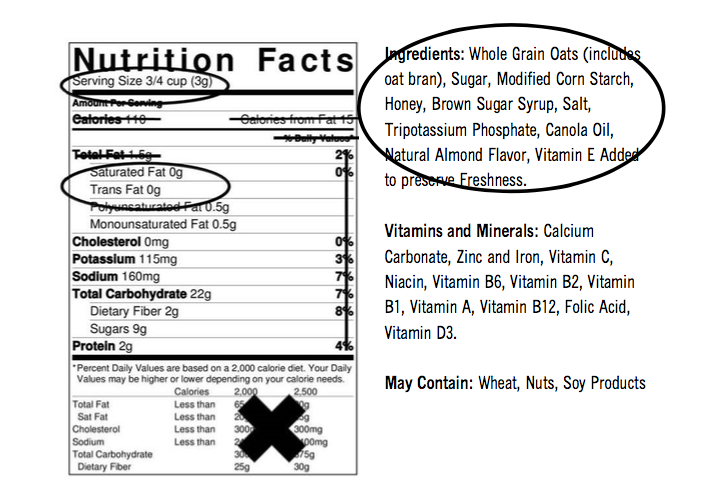



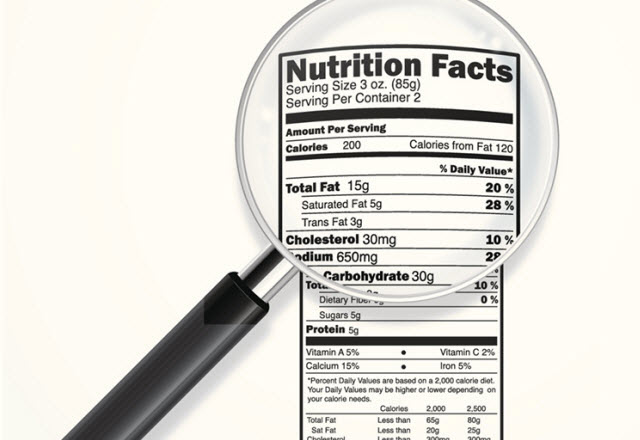





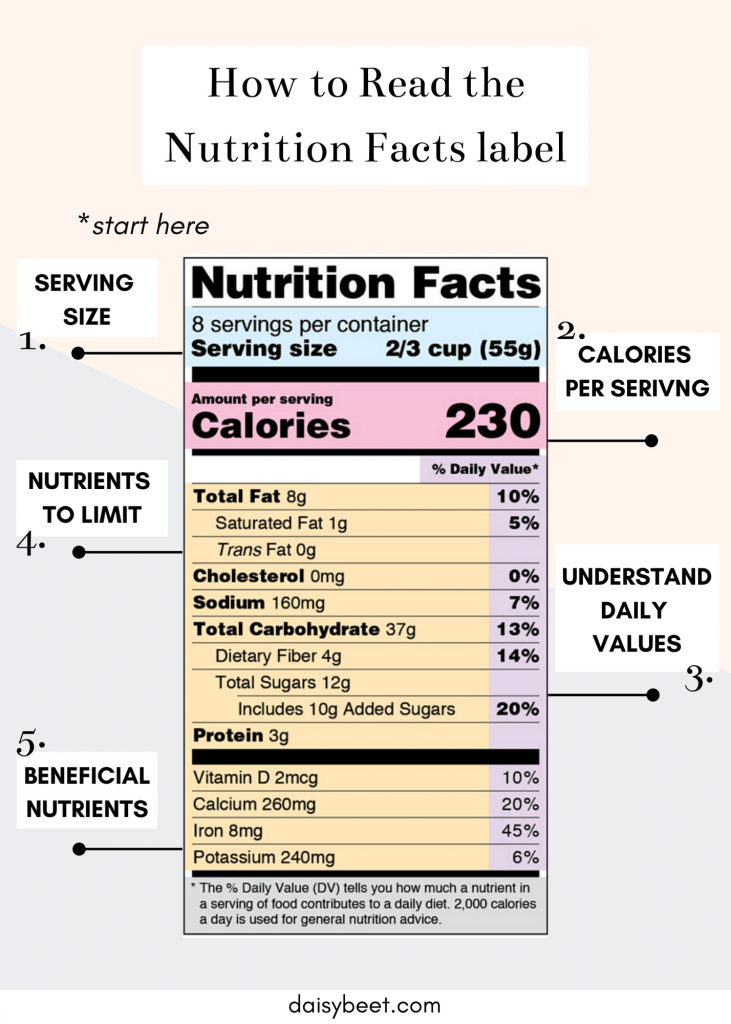

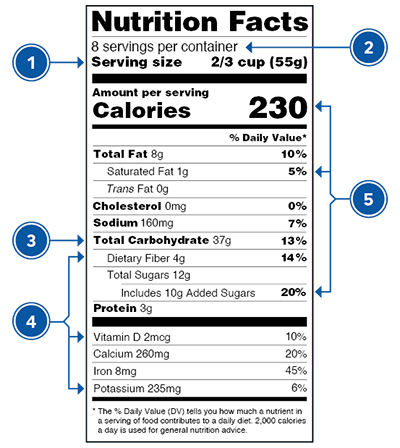
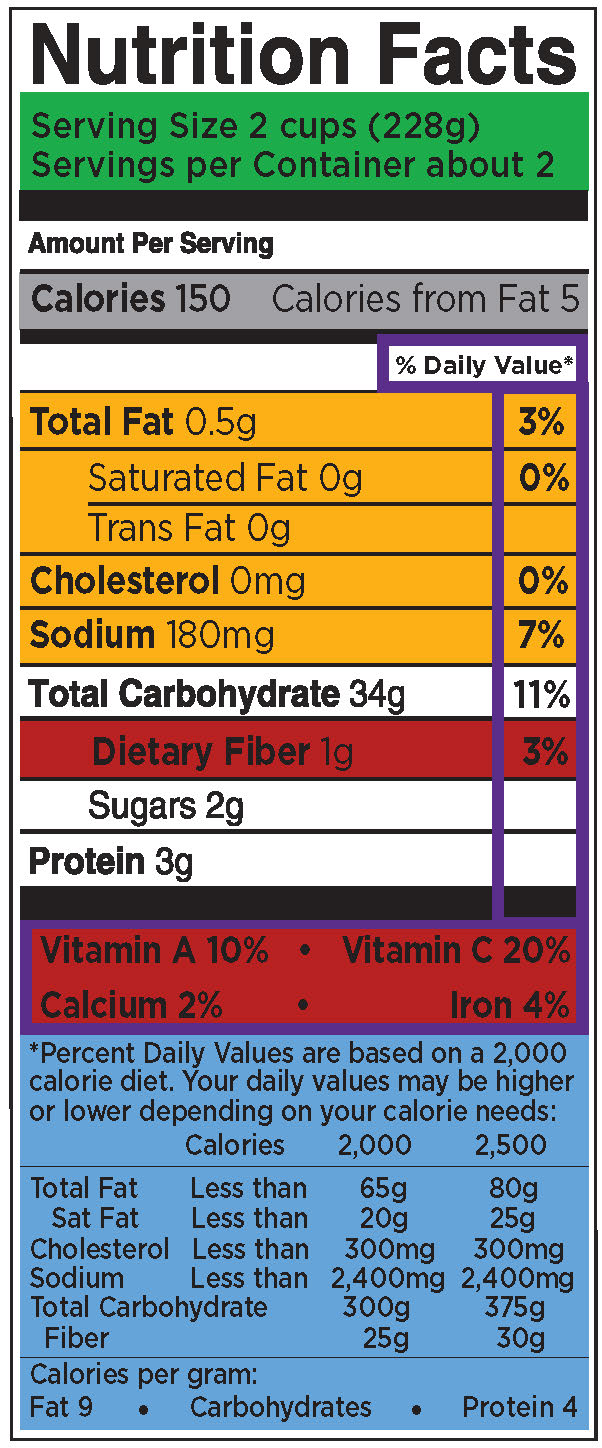
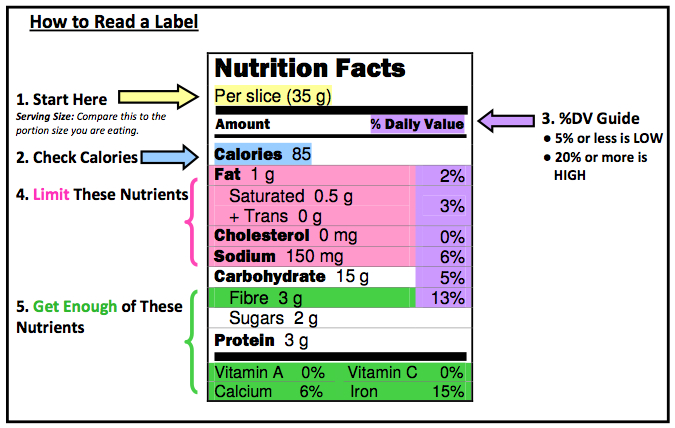
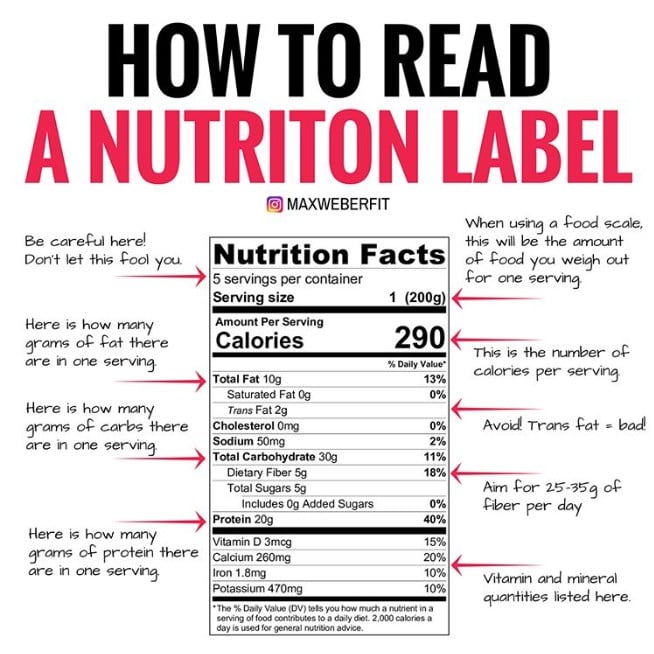
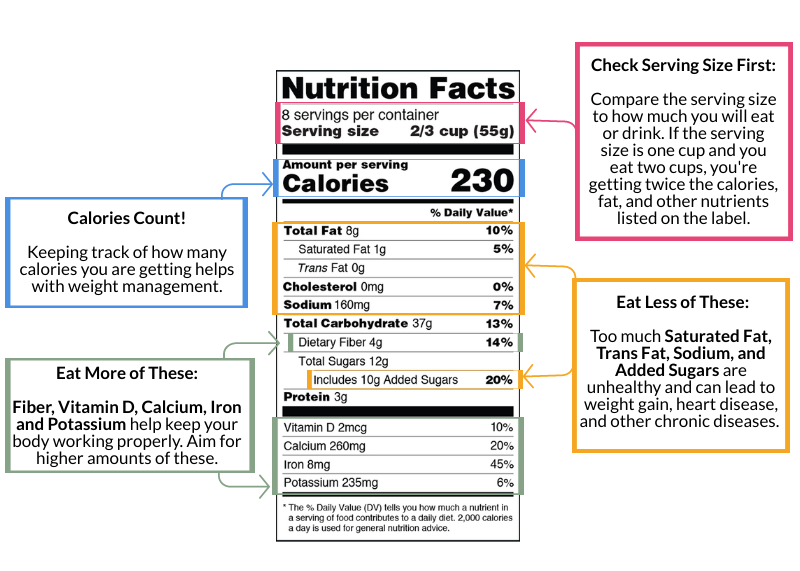

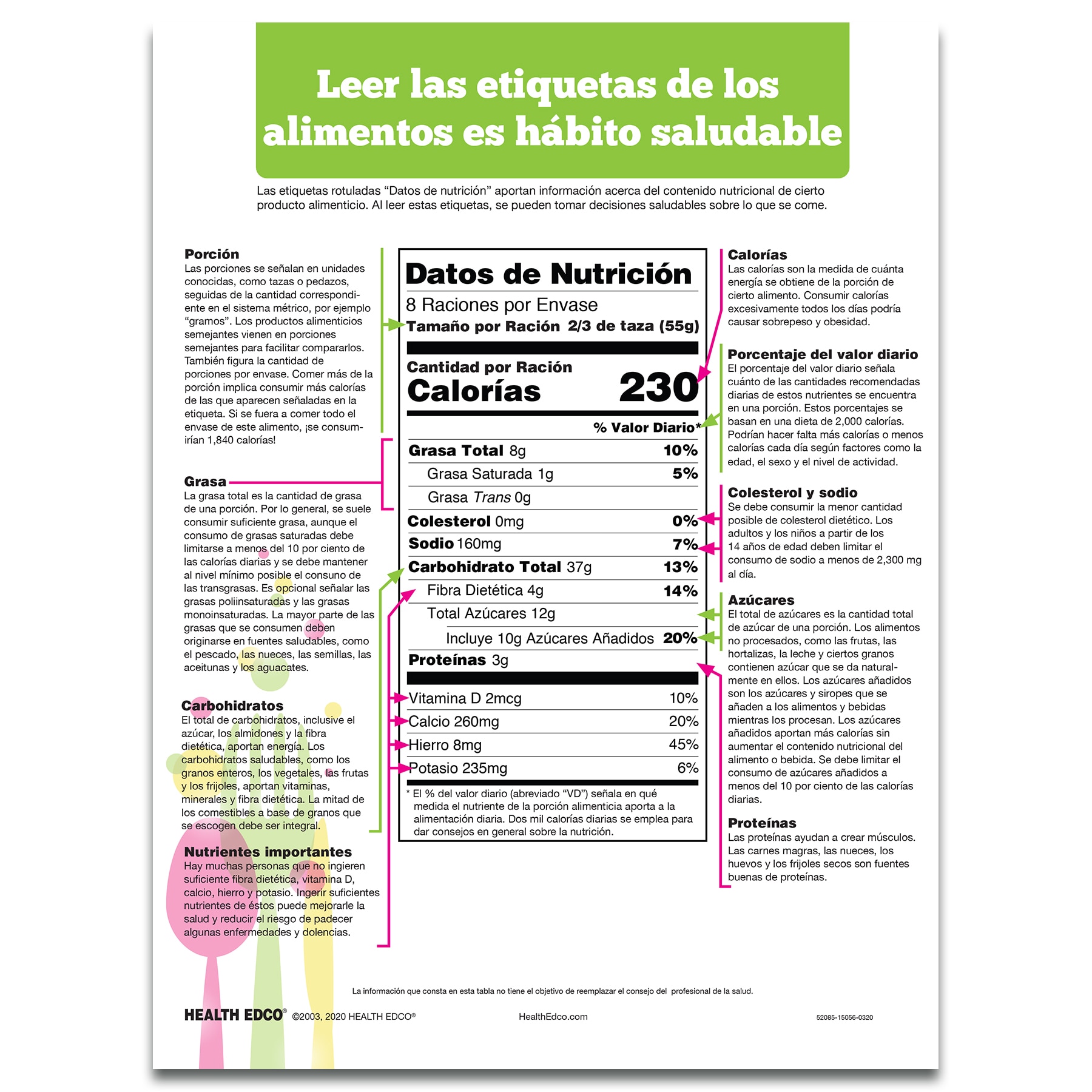

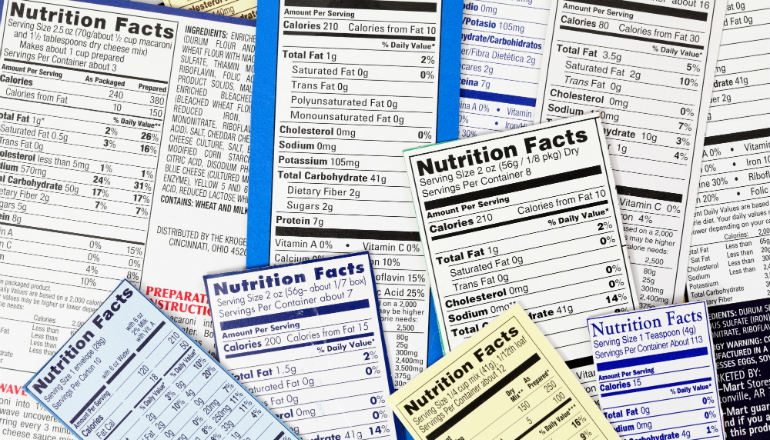

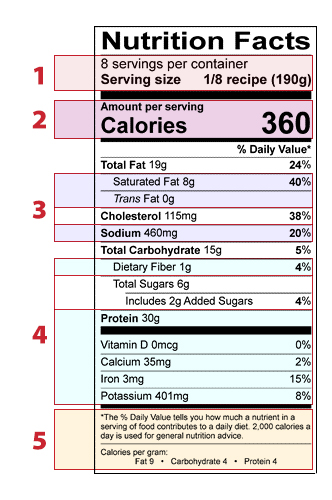

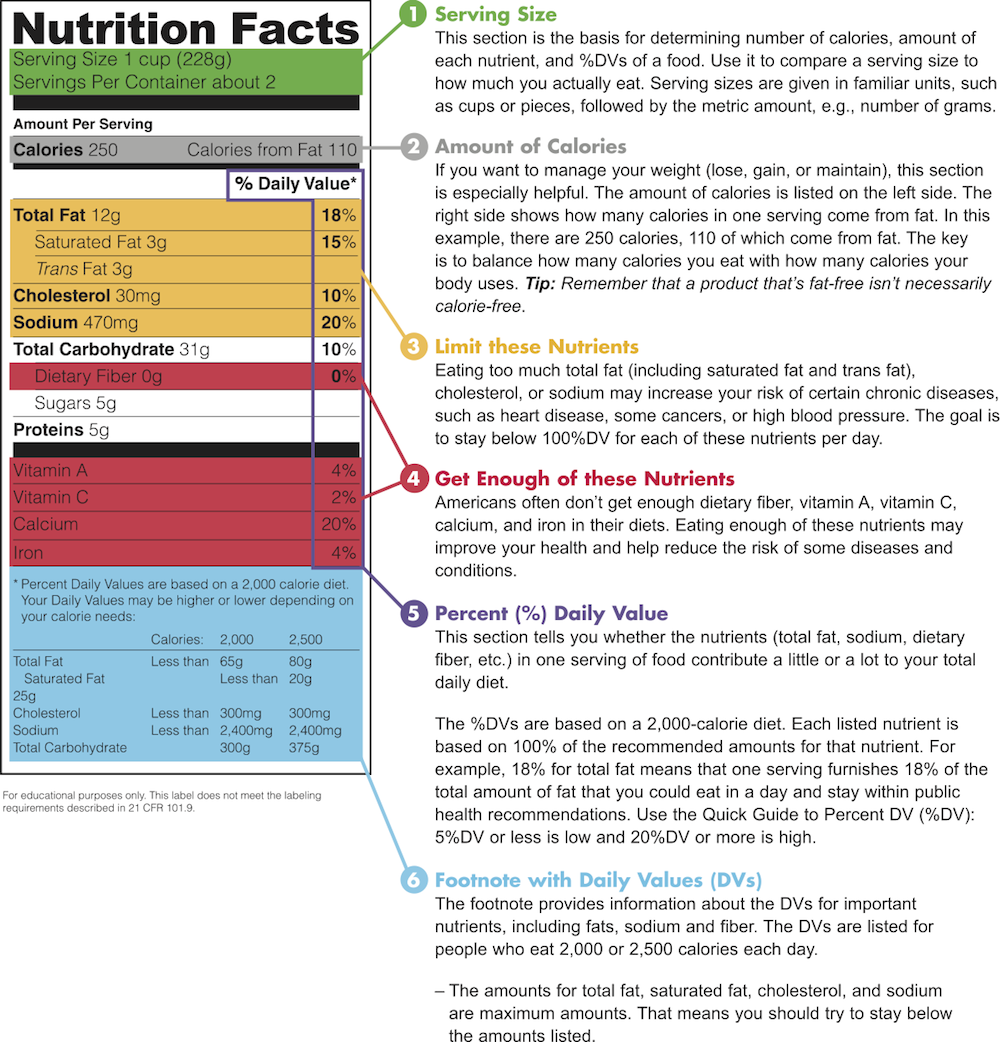

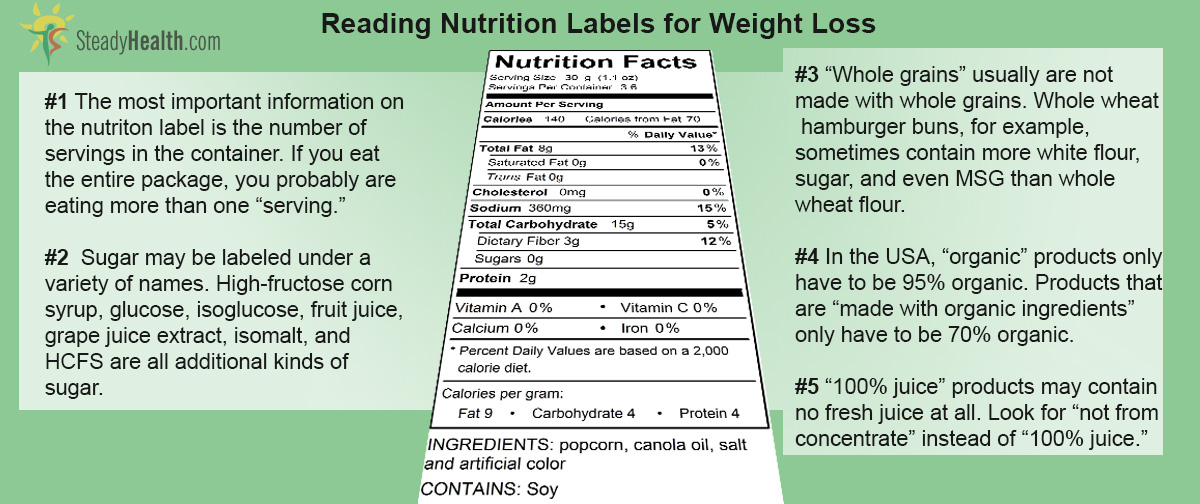


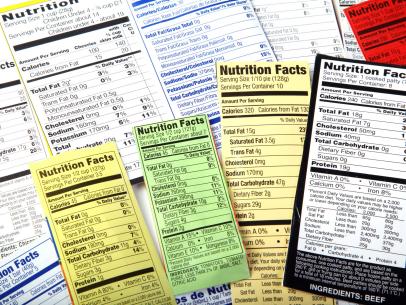




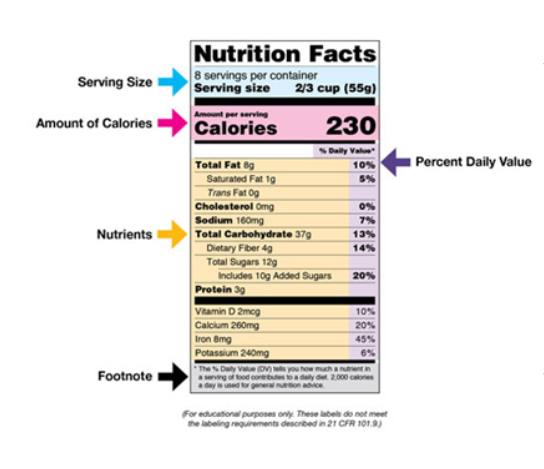
Post a Comment for "40 how to read nutrition information labels"